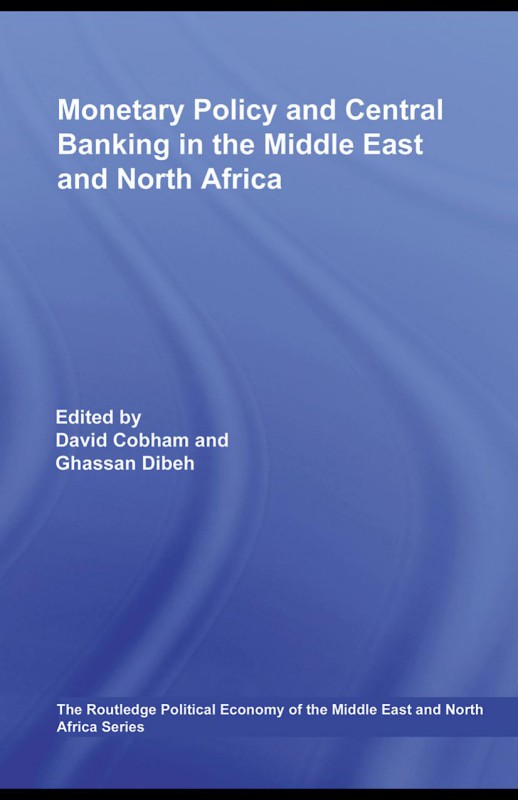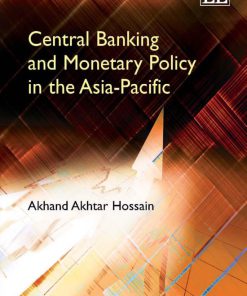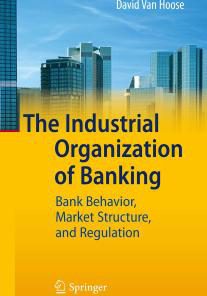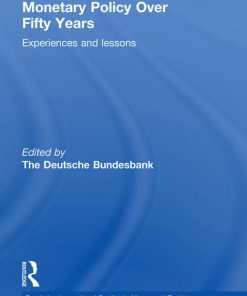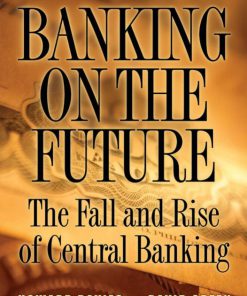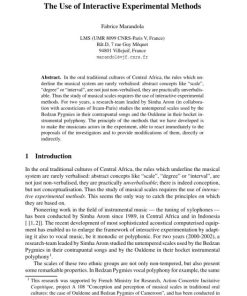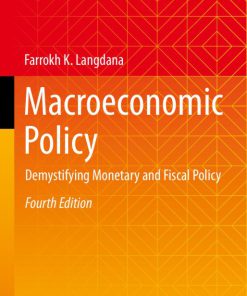Monetary Policy and Central Banking in the Middle East and North Africa 1st edition by David Cobham,Ghassan Dibeh 1134023766 9781134023769
$50.00 Original price was: $50.00.$25.00Current price is: $25.00.
Authors:David Cobham; Ghassan Dibeh , Series:Management [118] , Tags:Economics; Finance; Business & Industry , Author sort:Cobham, David & Dibeh, Ghassan , Languages:Languages:eng , Published:Published:Dec 2008 , Publisher:Routledge , Comments:Comments:This book examines monetary policy, central banking and exchange rate regimes in the Middle East and North Africa. Part I covers central banking and monetary policy, while Part II covers monetary policy and exchange rate regimes.
Monetary Policy and Central Banking in the Middle East and North Africa 1st edition by David Cobham,Ghassan Dibeh – Ebook PDF Instant Download/Delivery.9781134023769,1134023766
Full download Monetary Policy and Central Banking in the Middle East and North Africa 1st edition after payment
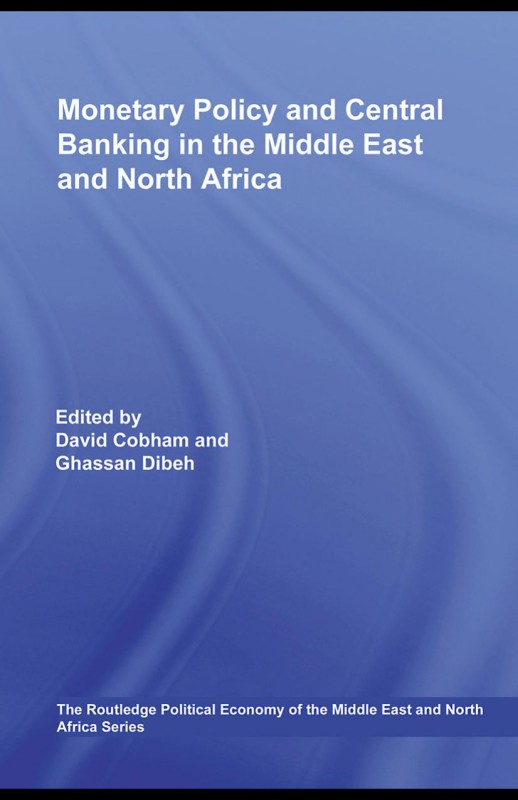
Product details:
ISBN 10:1134023766
ISBN 13: 9781134023769
Author:David Cobham,Ghassan Dibeh
This book examines monetary policy, central banking and exchange rate regimes in the Middle East and North Africa. Part I covers central banking and monetary policy, while Part II covers monetary policy and exchange rate regimes. Some chapters focus on the monetary frameworks of particular countries, including Lebanon, Algeria, Syria, Tunisia, Morocco, and Turkey, outlining the different systems operated in each case, considering their successes and failures, and discussing important issues such as government policy, macroeconomic performance, inflation and inflation targeting, central bank independence and the impact of broader political economic developments on the conduct of monetary policy. Other chapters cover thematic issues across the whole region, including: central bank independence, operations of debtor central banks, the effect of exchange rates on inflation, and the effect on countries’ trade of alternative exchange rate regimes. Drawing on the insights of scholars and policy-makers, this book is a vital resource for anyone wanting to understand the economies of the Middle East and North Africa.
Monetary Policy and Central Banking in the Middle East and North Africa 1st Table of contents:
1 Introduction
References
Part I Central banking and monetary policy
2 The political economy of central banking in the MENA region with special reference to Lebanon
Introduction
1 Central Bank independence and inflation in MENA
2 The rise of the Banque du Liban
3 The political economy of the BdL
Finance-industry relations
The position of Lebanon in the international economy
Capital-labour relations
Transformation in the political-economic matrix
4 Conclusions
Notes
References
3 The degree of legal central bank independence in MENA countries: International comparisons and macroeconomic implications
Introduction
1 A brief survey of the literature on central bank independence
2 Methodology and brief regional overview
Methodology
A brief regional overview of the Mediterranean region
3 Results
The Mediterranean region
Central bank objectives
Policy form ulation
Political autonomy
Economic autonomy
Accountability
4 The macroeconomic impact of central bank independence
The Mediterranean region
5 Concluding remarks
Notes
References
Appendix 3.1 Scores
Appendix 3.2 Methodology
4 Monetary policy operations of debtor central banks in MENA countries
Introduction
1 Monetary and exchange rate policies by creditor and debtor central banks
The asymmetric nature of the world currency system
Creditor central banks
Debtor central banks
2 Monetary policy operations at debtor central banks in MENA countries
Overview and data
Country analysis
3 Conclusions
Notes
References
5 Central bank independence in a MENA transition economy: The experience of Algeria
Introduction
1 Does central bank independence matter in developing countries?
Definitions and measures of central bank independence
The challenge for developing countries
2 Institutional heritage and the independence of the Bank of Algeria
The socialist legacy: the Bank of Algeria in a planned economy (1962–1990)
Algeria as a MENA country: the Bank of Algeria in a ‘capitalist’ economy (1990–2005)
On the impact of political constraints: the independence of the Bank of Algeria at the time of the ‘events’ (1990–1993)
The dependence of the Bank of Algeria on the IMF: the impact of the adjustment programmes (1994–1998)
A political and economic context favourable to the independence of the Bank of Algeria: 2000/2001–2005
3 The evolution of the de jure and de facto independence of the Bank of Algeria
De jure and de facto independence from 1990 to 2003
Why the Bank of Algeria took the path towards de jure independence
The election of the managers
The conduct of monetary policy
The stability of prices
The budget deficit and monetary policy
From de jure to de facto independence in the 1990s
What has changed with the 2003 ordinance
From de jure to de facto independence in the 2000s
4 Conclusion
Note
References
6 Inflation targeting and financial fragility in Tunisia
Introduction
1 The readiness of the Tunisian monetary and financial system for inflation targeting
The central bank
The soundness of the Tunisian financial system
Monetary and fiscal policies
2 Financial fragility and the effectiveness of inflation targeting: the analytical framework
The model
Simulations
3 Conclusion
Notes
References
Appendix 6.1 Data description and sources
Appendix 6.2 Actual versus fitted variables: base run
Appendix 6.3 Econometric estimation
Part II Monetary policy and exchange rate regimes
7 Alternative exchange rate regimes for MENA countries: Gravity model estimates of the trade effects
Introduction
1 Methodology and data
A formal gravity model
Estimating the gravity model
2 Exchange rate regimes
3 The estimation result
4 Simulation results
5 Conclusions
Notes
References
Data definitions
Appendix 7.1
8 Exchange rate arrangements and price stability in MENA countries
Introduction
1 Literature review
2 Exchange rate regime classification in MENA countries
The IMF exchange rate classification
Exchange rate regimes in MENA countries: evolution and performance
3 Testing methodology
4 Empirical results
5 Conclusion
Notes
References
9 Exchange rate regimes for small countries: An application to the Maghreb countries
Introduction
1 Brief economic background of Algeria, Morocco and Tunisia
2 The model
Markets for goods
Initial equilibrium
Economic policy objectives
Transaction costs
3 Shocks and adjustment
Flexible exchange regime (Flex)
Fixed exchange rate regime of the BW type (Fix1): the large country retains monetary autonomy
Fixed exchange rate regime of EMS type: floating against the large country
Monetary Union between countries 1 and 2 (MU): floating against the large country.
4 Evaluation of exchange rate regimes: a cost-benefit analysis
The adjustment costs component
Monetary shocks
Real shocks
The inflationary bias component
Transactions costs
5 Conclusion
Notes
References
10 Estimating central bank behaviour in emerging markets: The case of Turkey
Introduction
1 The empirical model
Data and estimation
Conclusion
Notes
References
Appendix 10.1
11 A common currency for Middle Eastern and North African countries?: Lessons from the European Monetary Union
Introduction
1 Economic performance in MENA countries: some stylised facts and figures
2 Exchange rate arrangements, trade, and financial stability
3 A new framework for regional monetary integration
Payments between two MENA countries
Payments between a MENA country and a E(M)U country
Payments between a MENA country and a non-E(M)U country
Conclusion
People also search for Monetary Policy and Central Banking in the Middle East and North Africa 1st:
monetary policy and central banking module pdf
relationship between monetary policy and central banking
monetary policy and central banking syllabus
monetary policy and central banking book philippines
economics of monetary policy and central banking
You may also like…
eBook PDF
The Great War and the Middle East 1st edition by Rob Johnson ISBN 019968328X 978-0199683284

